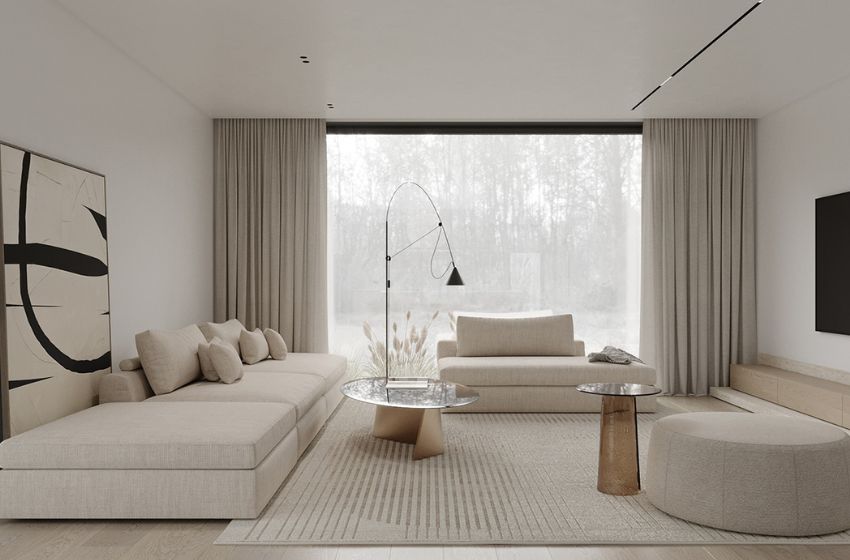In today’s fast-paced world, the concept of minimalism has gained popularity as more people seek to simplify their lives and focus on what truly matters. Minimalist living is not just about getting rid of excess stuff; it’s about intentionally curating your environment to create a sense of calm, clarity, and purpose. By decluttering your home and embracing minimalist principles, you can free yourself from the burden of unnecessary possessions and create a space that nurtures peace and contentment. Here are seven simple steps to help you declutter your home and embrace minimalist living:
1. Start Small: The thought of decluttering an entire home can be overwhelming, so it’s essential to start small and focus on one area at a time. Begin with a single room, such as a closet or bathroom, and work your way through each space methodically. Set achievable goals for each decluttering session, whether it’s clearing out a specific number of items or organizing a particular area. By breaking the process down into smaller tasks, you’ll avoid feeling overwhelmed and stay motivated to continue decluttering.
2. Declutter by Category: When decluttering your home, it’s helpful to organize items by category rather than tackling each room separately. Start with broad categories such as clothing, books, kitchen gadgets, and sentimental items, then break them down into subcategories for easier sorting. As you go through each category, ask yourself if each item brings value to your life or if it serves a specific purpose. If not, consider letting go of it by donating, selling, or recycling it. Be ruthless in your decision-making and keep only the items that truly add value and joy to your life.
3. Embrace the KonMari Method: Popularized by Japanese organizing consultant Marie Kondo, the KonMari method encourages decluttering based on whether items “spark joy.” To declutter using the KonMari method, hold each item in your hands and ask yourself if it brings you joy. If the answer is yes, keep it; if not, thank it for its service and let it go. This approach encourages mindfulness and intentionality in decision-making, helping you create a home filled only with items that bring you happiness and fulfillment.
4. Adopt a “One In, One Out” Rule: To prevent clutter from accumulating in the future, adopt a “one in, one out” rule for your belongings. Whenever you bring a new item into your home, whether it’s a piece of clothing, a book, or a household gadget, commit to letting go of an existing item in the same category. This simple rule encourages mindful consumption and prevents your home from becoming overrun with unnecessary possessions. Before making a new purchase, consider whether it aligns with your values and whether you’re willing to part with something else to make room for it.
5. Create Functional Storage Solutions: Effective storage solutions are key to maintaining a clutter-free home. Invest in storage containers, baskets, shelves, and furniture that serve a dual purpose of organizing and concealing belongings. Utilize vertical space by installing floating shelves or wall-mounted organizers to maximize storage in small spaces. Additionally, make use of multi-functional furniture pieces, such as ottomans with hidden storage compartments or coffee tables with built-in drawers, to reduce visual clutter and create a clean, streamlined look.
6. Practice Mindful Consumption: Minimalist living isn’t just about decluttering; it’s also about being mindful of your consumption habits. Before making a purchase, ask yourself if the item is truly necessary and whether it aligns with your values and priorities. Consider the environmental impact of the product, its longevity, and whether you have a genuine need for it. By practicing mindful consumption, you can avoid impulse buys and reduce the influx of unnecessary possessions into your home, ultimately leading to a more intentional and fulfilling lifestyle.
7. Cultivate Gratitude and Contentment: At its core, minimalist living is about embracing gratitude and contentment with what you have. Instead of constantly seeking more, learn to appreciate and make the most of the possessions, experiences, and relationships you already have in your life. Take time to reflect on the things that truly bring you joy and fulfillment, whether it’s spending time with loved ones, pursuing hobbies, or enjoying simple pleasures. By cultivating gratitude and contentment, you’ll find that you need less to feel happy and fulfilled, allowing you to live a more meaningful and purposeful life.
Conclusion
In conclusion, decluttering your home and embracing minimalist living can have a profound impact on your physical space, mental well-being, and overall quality of life. By following these seven simple steps, you can create a clutter-free environment that fosters peace, clarity, and contentment. Remember that minimalism is a journey, not a destination, and it’s okay to take it one step at a time. Embrace the process, stay focused on your goals, and enjoy the benefits of a simpler, more intentional way of living.
